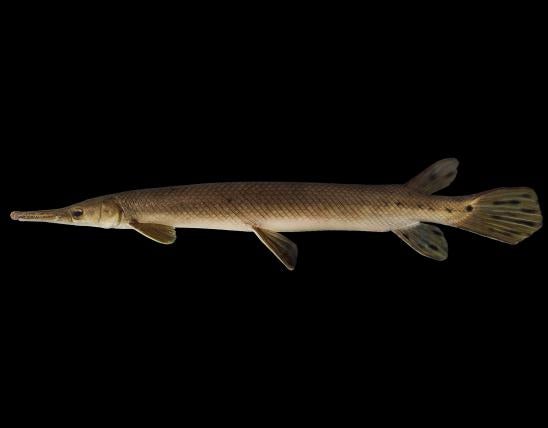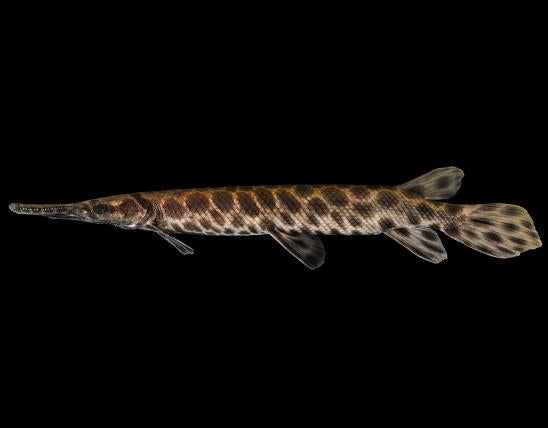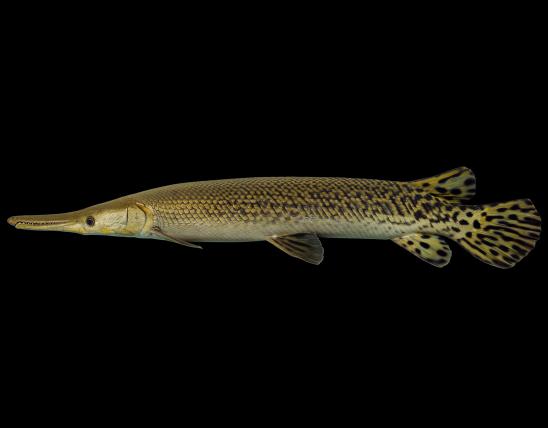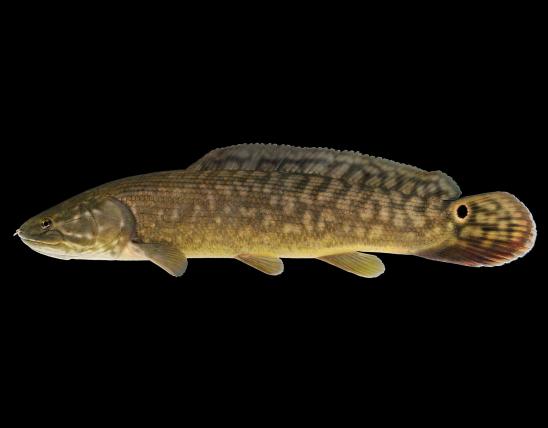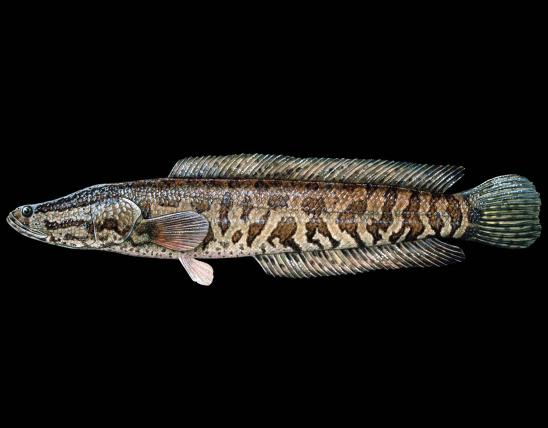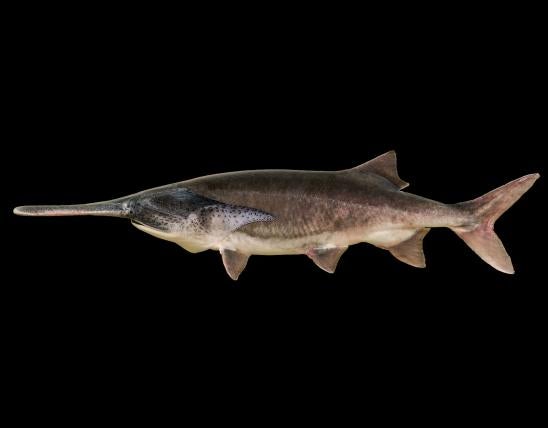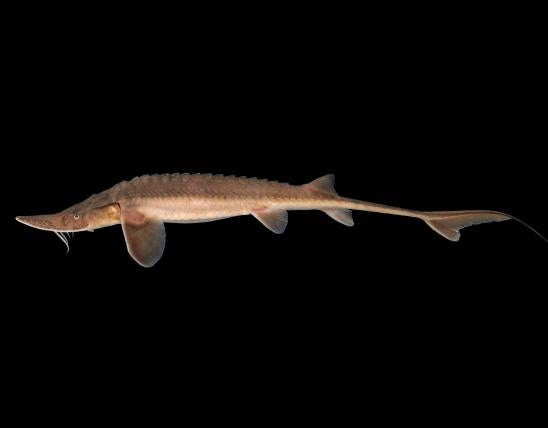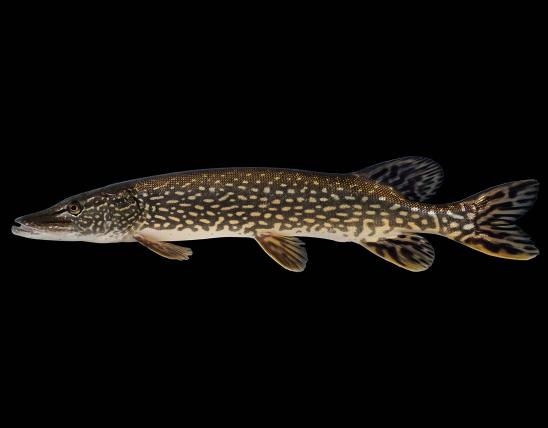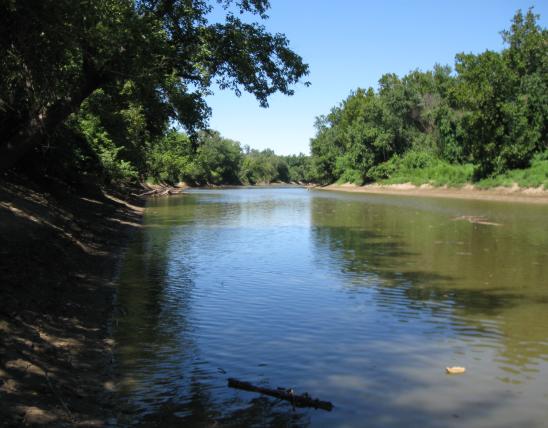- This Area is owned and maintained by: City of Lexington
- For more information or to report problems, please contact: Lexington Parks and Recreation 660-259-2697
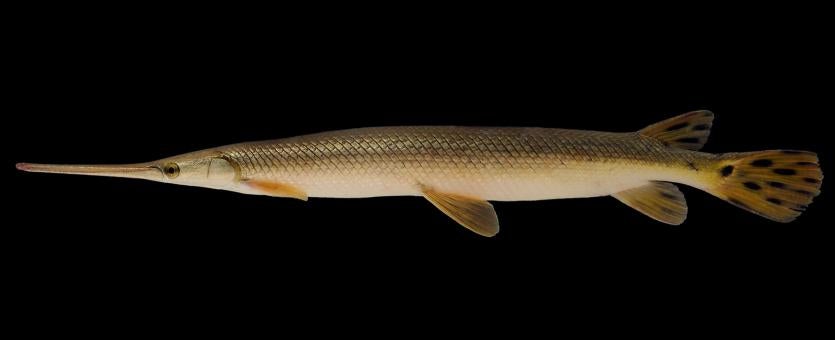
Gars are elongated, cylindrical fish with long snouts with numerous prominent teeth. The body is covered with hard, diamond-shaped scales. The longnose gar is named for its distinctively long, narrow snout: the least width of the snout goes about 15 to 20 times into its length, and the width of the snout at the nostrils is less than the eye diameter. The large teeth on the upper jaw are in single rows on each side.
Coloration of this species is brown to dark olive above, grading to white on the belly. The unpaired fins have numerous roundish black spots, and specimens from clear water often also have spots on the body. Young have a conspicuous black stripe along the midside.
Similar species: Missouri has four species of gars. The long, narrow snout easily separates the longnose gar from the other three.
- The shortnose gar (L. platostomus) has a moderately short, broad snout than all our other gars: the least width of the snout goes only about 6–10 times into its length. It's the commonest gar in Missouri outside of the Ozarks.
- The spotted gar (L. oculatus) is similar to the shortnose, but it has well-defined roundish black spots on the top of the head and paired fins. It is rather common and widely distributed in the Bootheel lowlands and adjacent Ozarks, but apparently rare or absent elsewhere in the state.
- The alligator gar (Atractosteus spatula) has a short, broad snout: the distance from the tip of its snout to the corner of the mouth is shorter than the rest of the head, and the least width of the snout goes only about 3–5 times into its length; also, it is a very large fish, commonly exceeding 3 feet in length and 8 pounds in weight. It is rare in the Mississippi, Missouri, and other big rivers. Reintroduction efforts are under way, as this native species grows big enough to help control invasive Asian carp.
Total length: commonly to 3 feet; weight: 5–6 pounds; largest in our state are about 60 inches and 30 pounds.

The most widely distributed gar in Missouri, probably occurring in every major stream in the state. It is the most abundant gar found in clear, high-gradient Ozark streams and is most abundant in the large Ozark reservoirs. Elsewhere in the state, it is less abundant at most localities than the shortnose gar.
Habitat and Conservation
The longnose gar probably occurs in every major stream in Missouri. It is the only species found in the clear, high-gradient streams of the central Ozarks and is most abundant in large Ozark reservoirs. It typically inhabits the sluggish pools, backwaters, and oxbows along large, moderately clear streams. It thrives in artificial impoundments. The adults usually are found in the larger, deeper pools. The young occur in shallow backwaters, often around thick growths of aquatic vegetation. Prior to spawning time, longnose gar move upstream into smaller and higher-gradient streams, and the young remain in these streams during their first summer of life.
Food
Except for a brief period after hatching, the longnose gar feeds almost entirely on fish. Young-of-the-year feed mostly on minnows, and older gar feed mostly on gizzard shad.
Gars, as a group, typically pursue their prey by stalking, rather than by active pursuit. They rapidly vibrate their fins, propelling them toward their prey with little apparent movement; they look like a drifting stick or log. Once within striking distance, a gar makes a quick lunge and grasps the prey sideways in its jaws. The many thin sharp teeth are not useful for shredding or clipping apart the prey; instead, they simply make escape impossible. When the grasped prey has ceased to struggle, the gar turns it in its jaws and swallows it headfirst.
Status
Non-game species.
Life Cycle
In the Ozarks, adult longnose gar appear in their upstream spawning locations by late April, and spawning may occur from early May to mid-June. Then spawning, adults gather in large numbers over the gravelly stretches of shallow riffles. No nest is prepared, but the gravel is cleaned by the spawning activities. Males far outnumber females on the spawning areas.
The females are always much larger than the males, and each female is accompanied by one to several males as she lies quietly on the riffle or cruises slowly about a nearby pool. The female does not deposit all of her eggs at once, and the spawning act is repeated at widely spaced and irregular intervals. Frequently, all the individuals in the vicinity gather in a compact group and vibrate rapidly. Often, they break the surface, splashing so noisily they may be heard from a considerable distance.
The large, adhesive eggs are mixed in the gravel as a result of these activities. They hatch in 6–8 days. The hatchlings have an adhesive disc on the snout by which they attach themselves to submerged objects until the yolk sac is absorbed.
Young longnose gar grow rapidly, reaching about 20 inches in length the first year. Males are mature at age 3 or 4 and about 28 inches in length. Females do not mature until age 6 and about 33 inches long. Males rarely live more than 11 years and do not exceed 3 feet in length, but females may live 20 years or more and reach at least 4½ feet in length.
Human Connections
Because they feed upon or compete for food with more “desirable” fishes, gars are often considered a worthless nuisance. But they may also serve as a natural control in preventing overpopulation and unbalanced fish populations, which improves fisheries and aquatic ecosystems in general.
Gar are seldom taken on hook and line and are rarely used for food. The hard, bony jaws of gars do not readily take a hook, and special techniques are required to capture them consistently with rod and reel. Because they often bask near the surface, gars provide a ready target for the bow hunter.
The eggs (roe) of gar are highly toxic to warm-blooded animals, including humans.
Some species of gars have been kept as aquarium fish, but this species — potentially reaching nearly a yard in length — would require a very, very large tank. In Missouri, anyone with a fishing permit can possess native nongame species in aquaria, if they are collected according to the rules outlined in the Wildlife Code of Missouri.
Ecosystem Connections
Gars are a small group of primitive bony fishes that are a characteristic element in the fish fauna of the Mississippi Valley.
The armor of hard, diamond-shaped scales, and the hard, bony covering over the head and beak provide gars with a continuous, nearly inflexible sheath, making gars immune to the attacks of most wood-be predators.
The gar order (Lepisosteiformes) are an ancient group of fishes, with representatives dating back to the Late Jurassic period. Some ancestral (“primitive”) characteristics include the ganoid (hard, diamond-shaped, non-overlapping) scales, heterocercal tail (note how the spine extends upward into the top part of the tail), and unique characteristics of the pectoral girdle (bones supporting the pectoral fins).
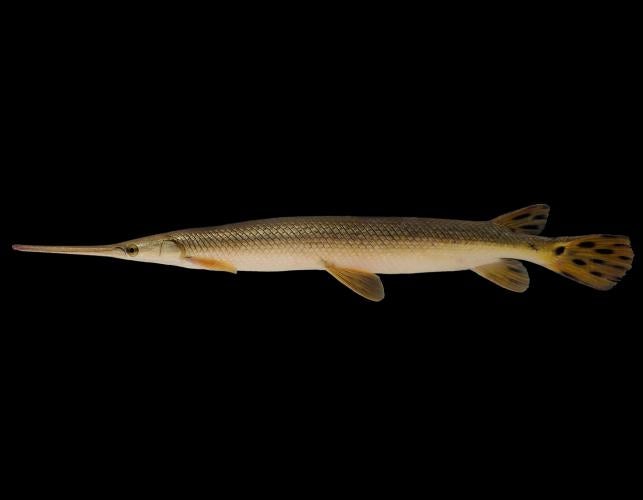
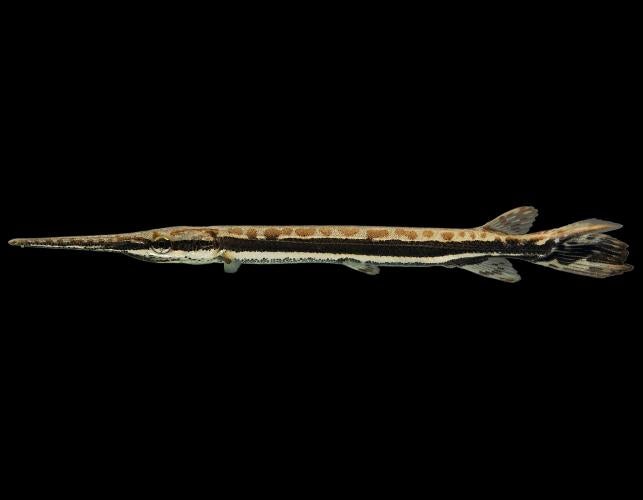
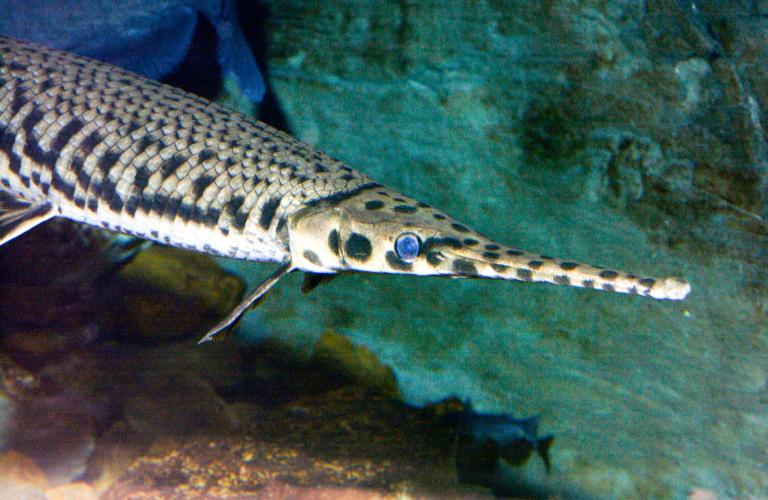
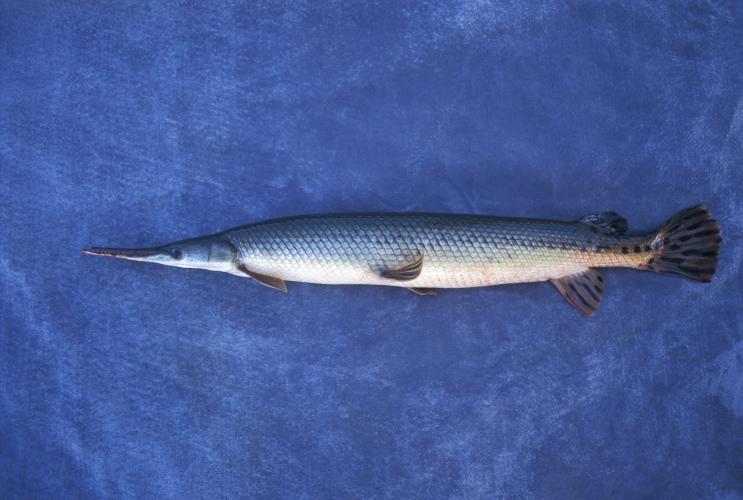
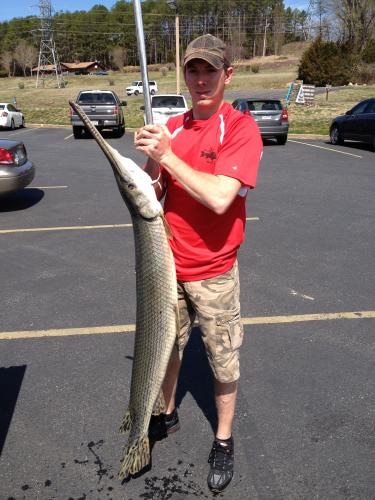
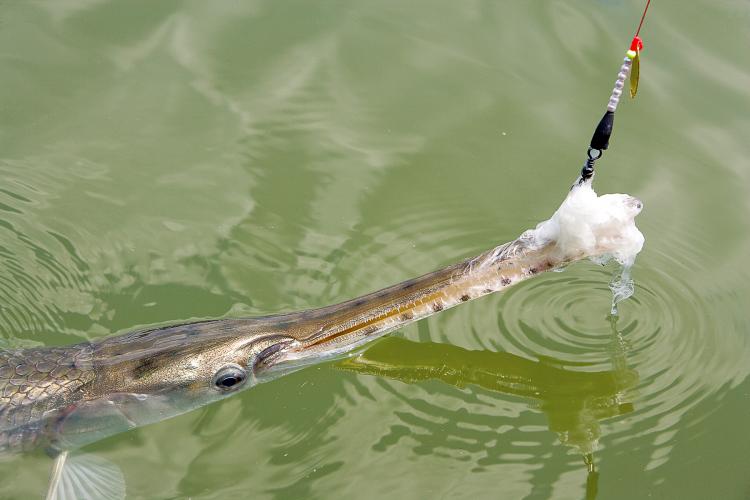
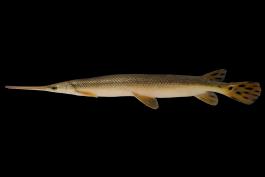
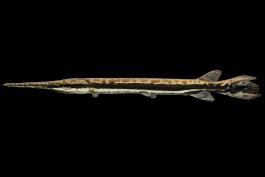
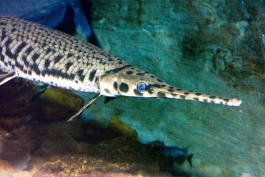
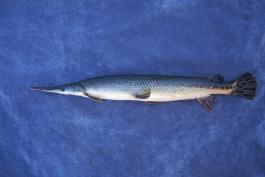
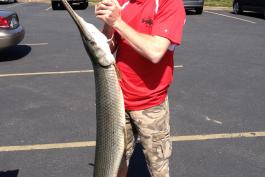
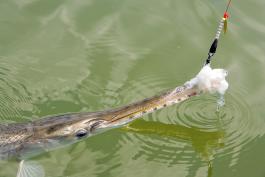
Where to See Species
Leased from Little River Drainage District






















